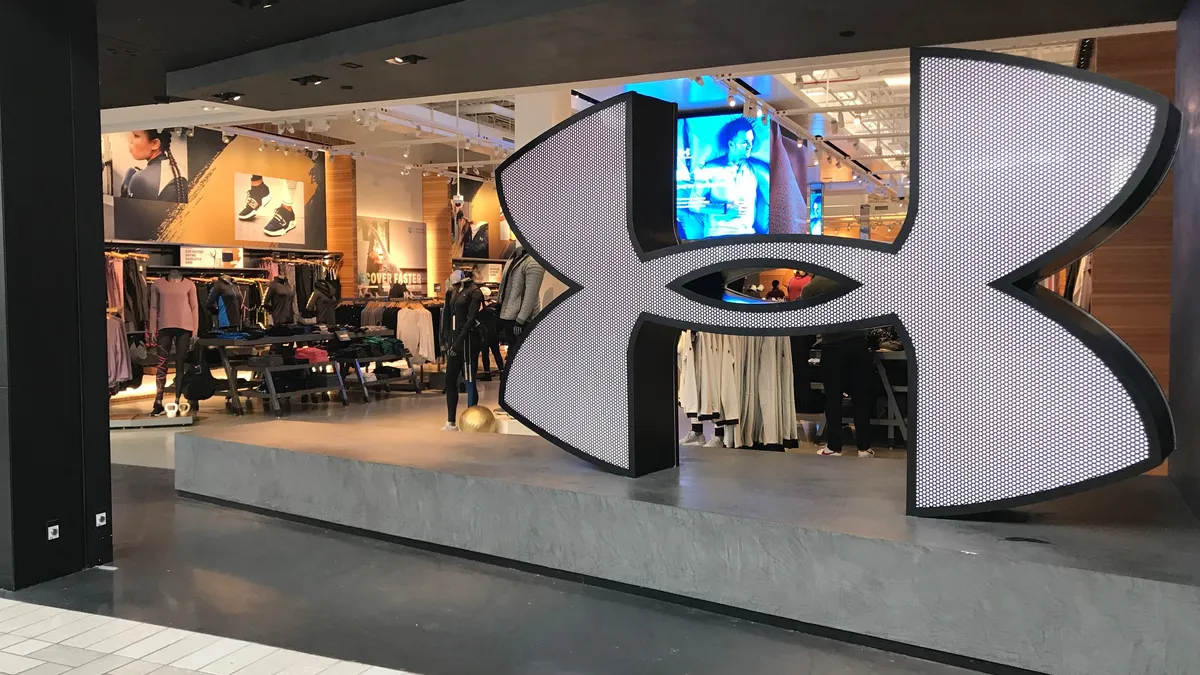Dive Brief:
- Under Armour is experiencing product delays "that could lead to some cancellations here and there" in the second half of 2021, which it has included in its year-end outlook, CFO David Bergman said on this week's earnings call.
- The product delays stem from a myriad of challenges in Vietnam — where Under Armour sources about a third of its goods — and throughout Southeast Asia. Manufacturing, logistics, port congestion, container availability, among other things, have stymied the flow of goods for the athletic brand, CEO Patrik Frisk said on the call.
- But the company's strategy of sourcing from different areas around the globe positions it well comparatively, while it looks to adjust to supply issues, Frisk said. "A well-balanced sourcing platform probably puts us in a maybe a little bit better position than most, but it's going to be a developing situation."
Dive Insight:
Under Armour's outlook for the second half of the year reveals that the brand is dealing with sourcing difficulties just like everyone else. But it sees a way out by spreading its sourcing out to many areas so that it can keep product lines flowing if any location clogs up.
"Vietnam, along with other countries in Southeast Asia have seen a resurgence in COVID so we’re keeping an eye on partner factory workforces with respect to capacity and productivity," Lance Allega, head of investor relations at Under Armour, said in an email. "We’re continuing to assess the right balance to support our long-term growth objectives, so over time, we’re targeting not having any more than 15-20% dependency on any single country."
Under Armour's top two sourcing countries are Vietnam and Jordan, accounting for 30% and 20% of sourcing, respectively. But the network extends to Europe and Latin America, too, as Frisk noted on the earnings call.
Many companies looked for alternative sourcing locations during the pandemic as they rethought their dependence on buying from China. While a third of global companies expected to increase spending from Vietnam this year, the challenges that Under Armour listed may complicate those plans and force others to look elsewhere. Guess, for instance, increased its share of suppliers in India and Bangladesh as a way to better secure product. Though the countries have dealt with material shortages and manufacturing delays.
Allega underscored Under Armour's competitive advantage and pointed to how its strategy to spread sourcing plays out in real time.
"Apparel and footwear is about evenly split in Vietnam, which is not like our competition, some of which source 50-60% of their footwear alone just from Vietnam, thus we have a considerably lower exposure," he said.
Under Armour had a jump in revenue during Q2, up 91% from the same quarter in 2020. But it is still being careful going forward, as supply costs and shipping disruptions connected to COVID-19 pressures caused a drop of 10 basis points during the quarter, Bergman said on the call.
Shipping delays and the inability to get container capacity has been a ubiquitous struggle for supply chains and retailers, in particular. Though rates have risen to historic levels, reliability has dropped, straining inventory levels and retailers' ability to fulfill orders on time. To cope, companies have tried to renegotiate contracts and bake in as much agility and resiliency as possible to change their processes and operations, hoping it will be enough to achieve profit margins.
"But again, the back half of the year, we do have to be careful with the supply chain pressures we just talked about and some of the delays and impacts of that could have along with the other headwinds that we outlined," Bergman said.














